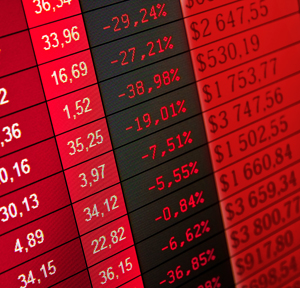Banking Crisis
Rapid ETF Expansion Makes Markets More Volatile - Merrill Lynch Wealth Management

The rapid expansion of exchange-traded funds makes global markets more volatile at a time when financial turmoil is already alarmingly high, according to Merrill Lynch Wealth Management.
The ETF market in the third quarter of 2011 held around $1.428 trillion of assets, comprising a total of 4,102 products, compared with $1.328 trillion and 3,257 products respectively in the third quarter of last year, according to iShares, the world’s largest provider of such products and part of BlackRock, the US asset management giant.
But while ETFs have been lauded for letting investors easily obtain exposure to markets, including previously inaccessible ones, the market has been recently criticised for a proliferation of sometimes opaque products.
And now they are being blamed for making markets more volatile.
“While ETFs may allow clients greater flexibility in navigating high volatility markets, evidence by one investment bank suggests ETFs and financial futures may be exacerbating high correlations and elevated volatility,” said Bill O’Neill, chief investment officer, EMEA, at Merrill Lynch Wealth Management.
“The elevated levels of uncertainty and volatility within global markets at present have prompted many investors to re-examine the role of exchange-traded funds (ETFs) in their portfolios,” O’Neill said in a regular note to clients, in which he also reflected on the eurozone debt crisis.
“A physically-backed ETF investing in the S&P 500 index would consist, as its underlying holdings, of a proportion of each of the 500 securities within this index. The advantage of this method is surety that the ETF has underlying securities which may have a value should the ETF provider fail. However, costs of full physical replication can be high, especially for broad or illiquid benchmarks,” he continued.
O’Neill said that “synthetic” or swap-based ETFs can allow for more unusual benchmarks to be tracked at a low cost, but total return swaps that back such products come with counterparty risk.
“If the bank to which the ETF provider pays a cash flow falls into financial difficulty, unable to pay the return on an index to the ETF provider, a synthetic ETF may own none of the underlying assets. It will have some collateral backing the structure but this collateral may be very different to the assets which the ETF is trying to replicate,” he said.
Futures and ETF volumes as a percentage of total equity volumes now stand at above 80 per cent and 40 per cent respectively, up from 35 per cent and around zero in late 1997, he said.
“Given the close relationship between excess correlation (correlation over and above that implied in the market pricing of options) and ETF volumes, more widespread use of ETFs may add to the very volatility investors seek to avoid in employing these products,” he said.
